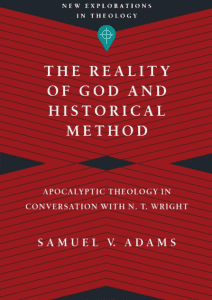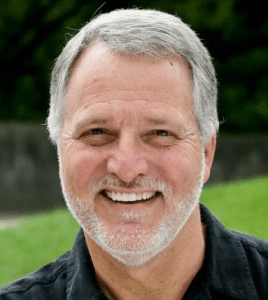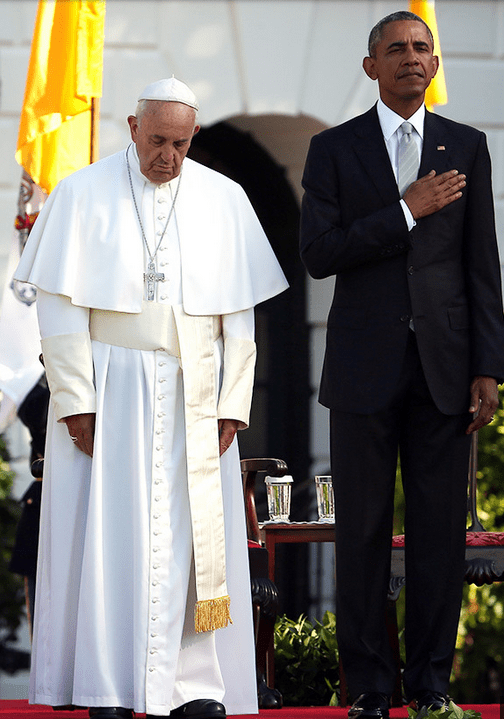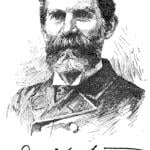Stories of the victims at USA Today.
Merry Christmas, what a gift!
On Saturday in Rosemount, Minn., a couple dropped a check into a Salvation Army kettle outside a Cub Foods supermarket.
Their gift was a bit more than the standard holiday donation, though.
Well, okay. It was a lot more.
The couple’s check was for $500,000.
“Yes, we believe the check is definitely good,” Salvation Army spokeswoman Julie Borgen told the Star Tribune on Monday. “We have been in touch with the donors, but they want to remain anonymous.”
Yet again, what a gift!
TEMPLE, Texas – Fellow freshmen in first period see her every day, but no one in Ashli Taylor’s theaterarts class knows what happened.
“Not to be rude, but kids these days… not a lot of them are grateful for what they have,” said Taylor, 15.
Not long after she was born in November 2000, doctors diagnosed her with a congenital birth defect that caused cirrhosis of the liver.
As an infant, she needed a transplant to survive, and that organ came from her own mother.
“Not a lot of people — or my teachers — even know what happened,” Taylor said.
So in September, she opened up about it in a creative writing assignment. Taylor typed a page-and-a-half letter to a surgeon at Baylor who helped save her life.
“This is like the most amazing letter,” said Dr. Robert Goldstein to Taylor’s mom outside the teen’s classroom at Temple High School. “She is incredible to have sat down and done that.”
Goldstein performed the operation that removed part of the liver from Taylor’s mother. He drove two hours south from Dallas to Temple Monday morning to surprise the young recipient he had never met.
“Ashli?” he asked as he walked in with a small arrangement of flowers in his hands. “Guess who? Your mom’s surgeon. You wrote me a letter, Dr. Goldstein.”
Another pitiful debate among our news media about whether or not to use “Islamic terrorism.” Making a big point to use the expression becomes as insufferable as spending time avoiding the expressions. A Bonnie and Clyde-like couple, planned the event, evidence of destruction of all hard drives and phones and email accounts… all signs of not wanting anyone to figure them out. The fact is they slaughtered innocent lives.
A positive review of Preston Sprinkle’s new book:
Illinois — being refashioned by a few wealthy:
The richest man in Illinois does not often give speeches. But on a warm spring day two years ago, Kenneth C. Griffin, the billionaire founder of one of the world’s largest hedge funds, rose before a black-tie dinner of the Economic Club of Chicago to deliver an urgent plea to the city’s elite.
They had stood silently, Mr. Griffin told them, as politicians taxed too much, spent too much and drove businesses and jobs from the state. They had refused to help those who would take on the reigning powers in the Illinois Capitol. “It is time for us to do something,” he implored.
Their response came quickly. In the months since, Mr. Griffin and a small group of rich supporters — not just from Chicago, but also from New York City and Los Angeles, southern Florida and Texas — have poured tens of millions of dollars into the state, a concentration of political money without precedent in Illinois history.
Their wealth has forcefully shifted the state’s balance of power. Last year, the families helped elect as governor Bruce Rauner, a Griffin friend and former private equity executive from the Chicago suburbs, who estimates his own fortune at more than $500 million. Now they are rallying behind Mr. Rauner’s agenda: to cut spending and overhaul the state’s pension system, impose term limits and weaken public employee unions.
“It was clear that they wanted to change the power structure, change the way business was conducted and change the status quo,” said Andy Shaw, an acquaintance of Mr. Rauner’s and the president of the Better Government Association, a nonpartisan state watchdog group.
The families remaking Illinois are among a small group around the country who have channeled their extraordinary wealth into political power, taking advantage of regulatory, legal and cultural shifts that have carved new paths for infusing money into campaigns. Economic winners in an age of rising inequality, operating largely out of public view, they are reshaping government with fortunes so large as to defy the ordinary financial scale of politics. In the 2016 presidential race, a New York Times analysis found last month, just 158 families had provided nearly half of the early campaign money.
Philip Jenkins:
Every few days, ISIS militants in the Middle East carry out some new atrocity calculated to inflict shock and awe on Western opinion. They carry out barbarous executions, they destroy priceless items of cultural heritage, all duly filmed, and those acts have their effect worldwide. It’s a sad commentary on global opinion, though, that some of the most savage blows inflicted on the world’s cultural and religious heritage have gained nothing like as much attention. Assyrian sculptures and Greco-Roman temples are irreplaceable monuments of human civilization, but so too are the living churches now being uprooted. Christian communities have almost been obliterated in most of Iraq, and a similar process is underway in large areas of Syria. That humanitarian crisis is familiar enough, but far less understood is the significance of these churches now facing terminal crisis. In their time, they represented not just a distant fringe of Christianity, but its heart and core. Ironically, they decisively shaped the history of Islam, as well as Christianity.
ISIS supporters identify Christian homes with the Arabic letter Nun for Nasrani, Nazarene. That usage takes us back to an era when followers of Jesus were as likely to bear that name as the newer alternative, “Christian.” For centuries, Christians in those regions used the Semitic Syriac language, which is so near to Hebrew and Aramaic. For a millennium, Syriac was one of the great languages of Christian literature, scholarship and devotion, at least equal in significance to Greek and Latin. What we see being before our eyes are the last vestiges of that critical third component of early and medieval Christianity.
Will Hobson and Steven Rich:
For the vast majority of the more than 4,000 colleges and universities in America, athletic departments should lose money. Their football and basketball teams don’t appear on national television, apparel companies don’t pay them millions for endorsement deals and they don’t have stadiums and arenas generating millions in ticket revenue.
But for athletic departments in the “Power Five” conferences — which includes 48 public universities that complied with records requests — a failure to profit is not inevitable, but the result of an athletic director’s decision to outspend income.
The sports programs in these five conferences — the Big Ten, Big 12, Pacific-12, Southeastern Conference and Atlantic Coast Conference — are the wealthiest in the country, and they are wealthy because of football.
Men’s basketball is also a money-maker, but arenas are smaller than football stadiums, limiting ticket income, and the sport’s largest television deal is managed more socialistically. The NCAA controls television rights for the wildly popular March tournament, and every year divies up nearly $800 million among hundreds of schools.
Football — where championship television rights belong to the conferences — separates Power Five schools from everyone else. ESPN is in the midst of a 12-year, $7.3 billion contract to televise the College Football Playoff that will primarily benefit the Power Five. Three of the conferences have launched their own television networks, creating additional revenue streams.
Of which this is but a sampling by George Will:
University of Missouri law students, who evidently cut class the day the First Amendment was taught, wrote a social media policy that included this: “Do not comment despairingly [disparagingly?] on others.” A grammatically challenged Ithaca College professor produced this cri de coeur regarding the school’s president: “There have been a litany of episodes and incidents during [his] tenure here which have led to frustration because, when brought to his attention, the view of the protesters is that he has been unresponsive.” Symptomatic of Ithaca’s intellectual flavor is another professor, who says agriculture is “capitalist, racialized patriarchy.”
The University of Wisconsin at Milwaukee, an irony-free campus, declaredthe phrase “politically correct” a microaggression. The master of Yale’s Pierson College said his regrettable title reminds distressed students of slavery. Wesleyan University’s student government threatened to cut the school newspaper’s funding because it published a column critical of campus leftists. Wesleyan created a “safe space,” a.k.a. a house, for LGBTTQQFAGPBDSM students (Lesbian, Gay, Bisexual, Transgender, Transsexual, Queer, Questioning, Flexual, Asexual, Genderf—, Polyamorous, Bondage/Discipline, Dominance/Submission, Sadism/Masochism). …
Some Johns Hopkins University students proclaimed themselves microaggressed by the possibility of a Chick-fil-A restaurant on campus. (Chick-fil-A’s chief executive defines marriage as Barack Obama did until 2012.) Mount Holyoke College canceled its annual production of “The Vagina Monologues” because it is insufficiently inclusive regarding women without vaginas and men who, as the saying goes, “self-identify” as women. “Gender,” said a student, “is a wide and varied experience, one that cannot simply be reduced to biological or anatomical distinctions,” and the show “is inherently reductionist and exclusive.”
Speaking of which, this sensitivity to so-called micro-aggressions begins with helicoptering to protect, by Amy Joyce:
A study published recently in the journal Education + Training found that there is an important line to draw between parental involvement and over-parenting. “While parental involvement might be the extra boost that students need to build their own confidence and abilities, over-parenting appears to do the converse in creating a sense that one cannot accomplish things socially or in general on one’s own,” wrote the authors, two professors from California State University Fresno. The authors of “Helicopter parents: An Examination of the Correlates of Over-parenting of College Students,” Jill C. Bradley-Geist and Julie B. Olson-Buchanan, go on to detail how over-parenting can actually ruin a child’s abilities to deal with the workplace.
Bradley-Geist and Olson-Buchanan, both management professors, surveyed more than 450 undergraduate students who were asked to “rate their level of self-efficacy, the frequency of parental involvement, how involved parents were in their daily lives and their response to certain workplace scenarios.”
The study showed that those college students with “helicopter parents” had a hard time believing in their own ability to accomplish goals. They were more dependent on others, had poor coping strategies and didn’t have soft skills, like responsibility and conscientiousness throughout college, the authors found.
Michael Baumann:
Football can be a force for good. The University of Missouri’s football team proved it earlier this month when student athletes took a facet of campus life that’s often decried—the cultural and economic dominance of college football—and turned it into a powerful leverage point in the pursuit of social justice.Football can build a sense of community for players and fans alike, and serve as a welcome escape from the pressures of ordinary life. The sport cuts across distinctions of race, class, geography, and religion in a way few other U.S. institutions do, and everyone who participates reaps the benefits.
But not everyone—particularly at the amateur level—takes on an equal share of the risk. College football in particular seems headed toward a future in which it’s consumed by people born into privilege while the sport consumes people born without it. In a 2010 piece in The Awl, Cord Jefferson wrote, “Where some see the Super Bowl, I see young black men risking their bodies, minds, and futures for the joy and wealth of old white men.” This vision sounds dystopian but is quickly becoming an undeniable reality, given new statistics about how education affects awareness about brain-injury risk, as well as the racial makeup of Division I rosters and coaching staffs. The future of college football indeed looks a lot like what Jefferson called “glorified servitude,” and even as information comes to light about the dangers and injustices of football, nothing is currently being done to steer the sport away from that path.
Roberto Ferdman:
“People decide to not do things all the time just because they’re alone,” said Rebecca Ratner, a professor of marketing at the Robert H. Smith School of Business, who has spent almost half a decade studying why people are so reluctant to have fun on their own and how it may lead to, well, less fun overall. “But the thing is, they would probably be happier going out and doing something.”
Ratner has a new study titled ‘Inhibited from Bowling Alone,’ a nod to Robert Putnam’s book about Americans’ waning participation in group activities, that’s set to publish in the Journal of Consumer Research in August. In it, she and co-writer Rebecca Hamilton, a professor of marketing at the McDonough School of Business, describe their findings: that people consistently underestimate how much they will enjoy seeing a show, going to a museum, visiting a theater, or eating at a restaurant alone. That miscalculation, she argues, is only becoming more problematic, because people are working more, marrying later, and, ultimately, finding themselves with smaller chunks of free time.
Ferdman also reported on the lack of chefs:
Behind the swinging doors of restaurant kitchens around the country, things are getting a bit more chaotic. It’s not the sort of thing diners would not have noticed, because it’s happening behind the scenes, out of view. Orders are still coming in, and plates are still coming out. But there’s a growing problem that chefs and restaurateurs are talking about more these days.
Good cooks are getting harder to come by. Not the head kitchen honchos, depicted in Food Network reality shows, who fine-tune menus and orchestrate the dinner rush, but the men and women who are fresh out of culinary school and eager.
The shortage of able kitchen hands is affecting chefs in Chicago, where restaurateurs said they are receiving far fewer applications than in past years. “It’s gotten to the point where if good cooks come along, we’ll hire them even if we don’t have a position. Because we will have a position,” Paul Kahan, a local chef, told the Chicago Tribune last week.
Sandra Boodman:
[B. Paul] Turpin’s experience illustrates the consequences of delirium, a sudden disruption of consciousness and cognition marked by vivid hallucinations, delusions and an inability to focus that affects 7 million hospitalizedAmericans annually. The disorder can occur at any age — it has been seen in preschoolers — but disproportionately affects people older than 65 and is often misdiagnosed as dementia. While delirium and dementia can coexist, they are distinctly different illnesses. Dementia develops gradually and worsens progressively, while delirium occurs suddenly and typically fluctuates during the course of a day. Some patients with delirium are agitated and combative, while others are lethargic and inattentive.
Patients treated in intensive care units who are heavily sedated and on ventilators are particularly likely to become delirious; some studies place the rate as high as 85 percent. But the condition is common among patients recovering from surgery and in those with something as easily treated as a urinary tract infection. Regardless of its cause, delirium can persist for months after discharge.















